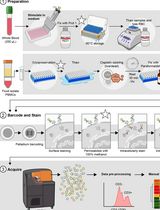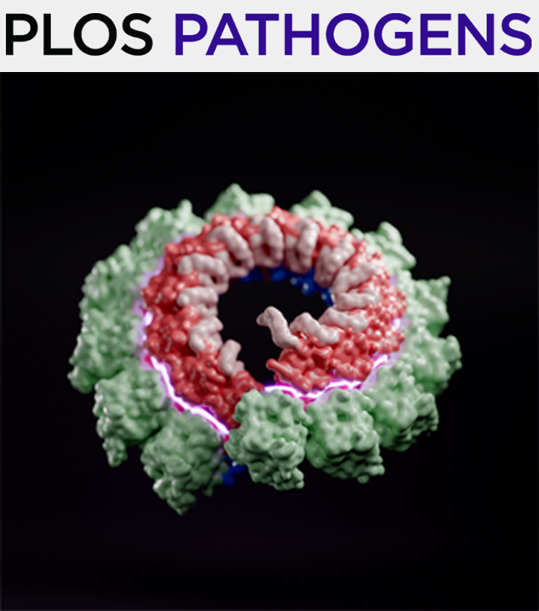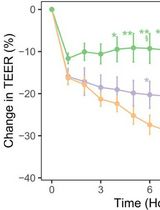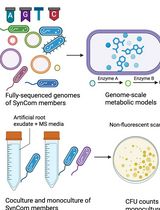- EN - English
- CN - 中文
Stimulation of Human Periodontal Ligament Fibroblasts Using Purified Dentilisin Extracted from Treponema denticola
用从密螺旋体中纯化提取的牙本质素刺激人牙周韧带成纤维细胞
发布: 2022年12月20日第12卷第24期 DOI: 10.21769/BioProtoc.4571 浏览次数: 1622
评审: Kristin L. ShinglerBruno LimaAnonymous reviewer(s)

相关实验方案

用于比较人冷冻保存 PBMC 与全血中 JAK/STAT 信号通路的双磷酸化 CyTOF 流程
Ilyssa E. Ramos [...] James M. Cherry
2025年11月20日 2132 阅读
Abstract
Periodontal disease is a chronic multifactorial disease triggered by a complex of bacterial species. These interact with host tissues to cause the release of a broad array of pro-inflammatory cytokines, chemokines, and tissue remodelers, such as matrix metalloproteinases (MMPs), which lead to the destruction of periodontal tissues. Patients with severe forms of periodontitis are left with a persistent pro-inflammatory transcriptional profile throughout the periodontium, even after clinical intervention, leading to the destruction of teeth-supporting tissues. The oral spirochete,Treponema denticola, is consistently found at significantly elevated levels at sites with advanced periodontal disease. Of allT. denticolavirulence factors that have been described, its chymotrypsin-like protease complex, also called dentilisin, has demonstrated a multitude of cytopathic effects consistent with periodontal disease pathogenesis, including alterations in cellular adhesion activity, degradation of various endogenous extracellular matrix–substrates, degradation of host chemokines and cytokines, and ectopic activation of host MMPs. Thus, the following model ofT. denticola–human periodontal ligament cell interactions may provide new knowledge about the mechanisms that drive the chronicity of periodontal disease at the protein, transcriptional, and epigenetic levels, which could afford new putative therapeutic targets.
Keywords: Periodontal disease (牙周病)Background
The human periodontal ligament serves as a connector between the tooth and the surrounding alveolar bone proper. Its main role is to convert mechanical forces into chemical signals, which largely mediate tissue turnover through the expression of various proteases, primarily matrix metalloproteinases (MMPs) (Ho et al., 2007; Sokos et al., 2015; Takimoto et al., 2015; Jiang et al., 2016; Lin et al., 2017; Kim et al., 2020). Periodontal diseases are caused by bacterially derived factors, leading to a chronic infectious inflammatory disease that affects the periodontium and gradually destroys the tooth-supporting alveolar bone (Sela et al., 1997; Asai et al., 2003; Hayashi et al., 2010; Trindade et al., 2014; Cecil et al., 2017; Deng et al., 2017; Gao et al., 2020) (Figure 1). As periodontal disease progresses, periodontopathogenic bacteria invade deeper into the subgingival space, compromising the periodontal ligament (PDL) function and contributing to tooth loss.

Figure 1. Pathophysiology of periodontal disease
Among over 500 species of bacterium, the oral spirochete, Treponema denticola, is consistently found at significantly elevated levels in advanced lesions (Ateia et al., 2018; Solbiati and Frias-Lopez, 2018). Additionally, elevated T. denticola biofilm levels, combined with elevated MMP levels in host tissue, display robust combinatorial characteristics in predicting advanced periodontal disease severity. Thus, clinical data regarding the increased presence of T. denticola in periodontal lesions, together with basic research results involving the role of T. denticola products, suggest that it plays a pivotal role in driving periodontal disease progression. Therefore, delineation of causative mechanisms that T. denticola uses to drive host modulation may help to identify novel targets for better or alternative treatments for this chronic disease.
Conserved lipid moieties of the protease complex recognized by host receptor complexes may contribute to the activation of innate immune responses (Schenk et al., 2009). Because predominant host responses to lipoproteins are believed to be to their lipid moieties, most studies have focused on diacylated lipopeptide, Pam2CSK4, and triacylated lipopeptide, Pam3CSK4, which mimic bacterial lipoproteins for their potent immunostimulatory and osteoclastogenic activities (Schenk et al., 2009; Kim et al., 2013; Wilson and Bernstein, 2016). Recent studies have demonstrated that synthetic di- and tri-acylated lipopeptides, which preferentially activate TLR2/6 and TLR2/1-dependent pathways respectively, are sufficient to induce alveolar bone loss in mice (Kim et al., 2013; Souza et al., 2020), broadening the avenues of investigation into the role of lipoproteins underpinning the pathogenesis of periodontal disease. However, studies that utilize endogenously expressed bacterial lipopeptides are lacking.
Several proteinases and peptidases secreted by T. denticola have been identified as causative factors that likely contribute to periodontal disease pathogenesis, due to their roles in processing host tissue proteins and peptides to fulfill the nutritional requirements of these highly motile and invasive organisms (Veith et al., 2009; Ellis and Kuehn, 2010; Visser et al., 2011; Asai et al., 2003; Cecil et al., 2016). Of all T. denticola surface-expressed proteins that have been described, a chymotrypsin-like protease complex, also called dentilisin, has demonstrated a multitude of cytopathic effects consistent with periodontal disease pathogenesis, including changes in cellular adhesion activity (Bamford et al., 2007; Sano et al., 2014), degradation of various endogenous extracellular matrix–substrates (Bamford et al., 2007; Miao et al., 2011; Inagaki et al., 2016), and degradation of host chemokines and cytokines (Miyamoto et al., 2006; McDowell et al., 2012). Despite the many studies demonstrating its role at the protein level, few direct links have been reported between the activity of T. denticola ’s protease and the cellular and tissue processes driving periodontal tissue destruction. The following protocol delineates the experimental setup to study the interactions between T. denticola’s dentilisin protease and human periodontal ligament cells.
Materials and Reagents
6-well clear multi-well plate (Fisher Scientific, catalog number: 25373-187)
10 cm Falcon tissue culture plate (The Lab Depot, catalog number: 25373-10)
Minimal essential medium-α (MEM-α) (ThermoFisher Scientific, catalog number: 12571063)
Phosphate buffered saline (PBS) (Thermo Fisher Scientific, catalog number: 14190-094)
Penicillin/streptomycin (P/S) (Thermo Fisher Scientific, Gibco, catalog number: 15140122)
Amphotericin B (Thermo Fisher Scientific, Gibco, catalog number: 15290018)
0.25% trypsin with phenol red (Thermo Fisher, catalog number: 25200-05
Heat-inactivated fetal bovine serum (FBS) (Gibco, catalog number: 10-438-026)
BCA protein assay kit (Millipore Sigma, catalog number: 71285-3)
Equipment
96-well SpectraMax Plus microplate reader (VWR, catalog number: 89212-396)
Labomed Lx400 phase contrast HD digital microscope (Microscope Central, catalog number: 9126017T-HDS)
SteriCycle 370 CO2 incubator (Thermo Fisher Scientific, catalog number: TH-370N)
NanoDrop One Microvolume UV-Vis spectrophotometer (Fisher Scientific, catalog number: 13-400-519)
Bright line hemacytometer chamber (Carolina, catalog number: 700722)
Thermo Sorvall ST16R refrigerated centrifuge (Thermo Fisher Scientific, catalog number: 75-004-240)
Procedure
文章信息
版权信息
© 2022 The Authors; exclusive licensee Bio-protocol LLC.
如何引用
Ganther, S., Fenno, J. C. and Kapila, Y. L. (2022). Stimulation of Human Periodontal Ligament Fibroblasts Using Purified Dentilisin Extracted from Treponema denticola. Bio-protocol 12(24): e4571. DOI: 10.21769/BioProtoc.4571.
分类
微生物学 > 微生物-宿主相互作用 > 细菌
医学
细胞生物学 > 细胞信号传导 > 胞内信号传导
您对这篇实验方法有问题吗?
在此处发布您的问题,我们将邀请本文作者来回答。同时,我们会将您的问题发布到Bio-protocol Exchange,以便寻求社区成员的帮助。
Share
Bluesky
X
Copy link











